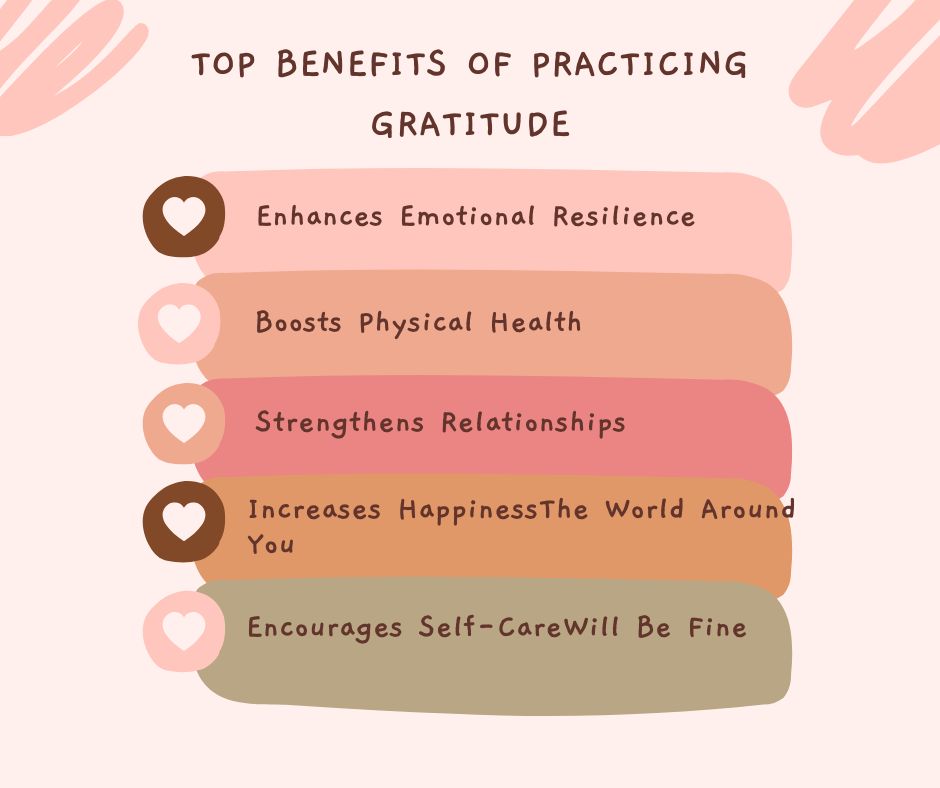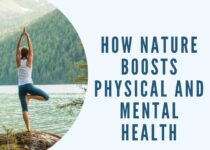How Practicing Thank fulness Improves Mental and Physical Health
Gratitude is more than just a polite gesture—it’s a powerful tool for improving mental and physical health. Research shows that regularly practicing gratitude can reduce stress, boost happiness, and even strengthen the immune system. In this article, we’ll explore the science behind gratitude, its benefits, and practical ways to incorporate it into your daily life.
What is Gratitude?
Gratitude is the practice of recognizing and appreciating the positive aspects of life, whether big or small. It involves focusing on what you have rather than what you lack, fostering a sense of contentment and well-being.
The Science Behind Gratitude
Studies have shown that gratitude activates the brain’s reward system, releasing dopamine and serotonin chemicals associated with happiness and relaxation. It also reduces activity in the amygdala, the part of the brain responsible for stress and fear responses.
Top Benefits of Practicing Gratitude

Improves Mental Health
Gratitude reduces symptoms of depression and anxiety by shifting focus away from negative thoughts and fostering a positive mindset.
Enhances Emotional Resilience
Grateful individuals are better equipped to handle stress and adversity, as they tend to focus on solutions rather than problems.
Boosts Physical Health
Gratitude has been linked to lower blood pressure, improved sleep quality, and a stronger immune system.
Strengthens Relationships
Expressing gratitude can deepen connections with others, fostering trust and mutual appreciation.
Increases Happiness
Regularly acknowledging the good in your life can lead to greater overall satisfaction and joy.
Encourages Self-Care
Grateful people are more likely to engage in healthy behaviors like exercise, proper nutrition, and regular sleep.
How to Practice Gratitude Daily
Keep a Gratitude Journal
Write down three things you’re grateful for each day. This simple practice can shift your focus to the positive aspects of life.
Express Gratitude to Others
Thank someone in person, through a note, or via a message. Acknowledging others’ kindness strengthens relationships.
Practice Mindfulness
Take a moment each day to reflect on the present and appreciate the small joys, like a beautiful sunset or a warm cup of tea.
Use Visual Reminders
Place sticky notes with gratitude prompts around your home or workspace to remind yourself to pause and reflect.
Incorporate Gratitude into Meals
Before eating, take a moment to appreciate the food and the effort that went into preparing it.
Start and End Your Day with Gratitude
Begin and conclude each day by thinking of one thing you’re grateful for. This sets a positive tone and promotes restful sleep.
Conclusion
Gratitude is a simple yet transformative practice that can significantly improve your mental and physical health. By incorporating gratitude into your daily routine, you can cultivate a more positive outlook, strengthen relationships, and enhance overall well-being. Start today—take a moment to appreciate the good in your life and experience the power of thankfulness.
Frequently Asked Questions (FAQs)
- How does gratitude improve mental health?
Gratitude shifts focus away from negative thoughts, reduces stress, and promotes a positive mindset, which can alleviate symptoms of depression and anxiety.
- Can gratitude improve physical health?
Yes, gratitude has been linked to lower blood pressure, better sleep, and a stronger immune system.
- How do I start a gratitude journal?
Write down three things you’re grateful for each day. They can be big or small, from a kind gesture to a personal achievement.
- What if I’m struggling to find things to be grateful for?
Start with simple things like your health, a meal, or a sunny day. Over time, you’ll train your brain to notice more positives.
- Can gratitude improve relationships?
Yes, expressing gratitude fosters trust, appreciation, and deeper connections with others.
- How long does it take to see the benefits of gratitude?
Some people notice improvements in mood and outlook within a few weeks, but consistency is key for long-term benefits.


